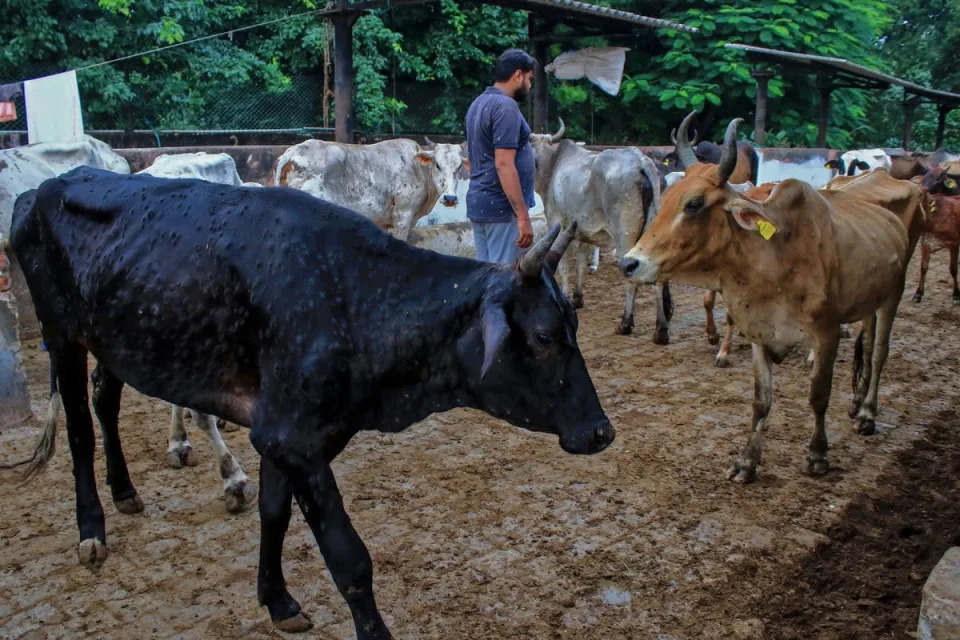- A viral disease has killed nearly 100,000 cattle and buffalo in India and infected more than 2 million more.
The outbreak has caused devastating loss of income for farmers, as the disease not only results in the death of their animals, but also in reduced milk production, malnourished animals and birth problems.
The disease, called lumpy skin disease, is transmitted by blood-sucking insects such as mosquitoes and ticks. Infected cows and buffalo get a fever and develop bumps on their skin.
Farmers have suffered severe losses due to natural disasters in the past year: An unprecedented heat wave in India reduced wheat production in April, lack of rain in the east of the country affected winter crops such as pulses, and a particularly rainy September has damaged rice paddies in the north.
And now, the virus has spread to at least 15 states, doubling the number of dead animals in three weeks, the Press Trust of India news agency reported.
The contagion in livestock has had a disproportionate impact on small farmers, many of whom have insulated themselves from the ravages of climate change by raising dairy cattle, said Devinder Sharma, an agricultural policy expert in the city of Chandigarh, in the North of the country.
“It’s a very, very serious issue, and this disease has been growing in the last couple of years,” he said, adding that the government figures are possibly underestimating the true number of individuals killed by the disease.
The first cases in South Asia were detected in 2019, and the disease has since spread to India, China and Nepal. It was first recorded in Zambia in 1929 and has spread to Africa and more recently to parts of Europe.

